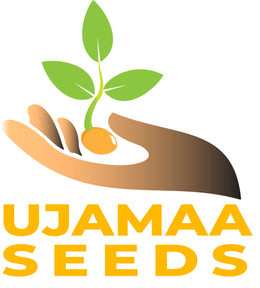According to the Heirloom Collard Project, this heirloom cabbage collard was adapted from Henry Mizelle of Williamston, North Carolina. Henry’s wife, Minnie Mizelle, saved seed of this variety for more than 60 years before she passed on in 2006 at the age of 90. Minnie shared the collard seeds with a number of local gardeners. She originally received this variety in the 1940s from her aunt, Martha Jones. In 2006, Henry gave seeds (of this variety and several others) to Dr. John Morgan, a cultural geographer and professor of geography at Emory & Henry College, who was collecting heirloom collard strains for preservation on behalf of the USDA Accession. Our seeds are from Jason Rutz /Elon University.
Minnie Mizelle Collards
Brassica oleracea
Seeds per pack ~ 100
Germination: 85% Oct 2024 (Packed for 2025)
Collards (Brassica oleracea, Acephala group) are leafy green vegetables that belong to the same family as kale, cabbage, and broccoli. They are known for their large, thick, dark green leaves with a slightly bitter, earthy flavor.
Collards are highly nutritious, rich in vitamins A, C, and K, as well as calcium and fiber. They are often used in southern U.S. cuisine, especially in stews and as side dishes, but can be enjoyed in many forms like stir-fries, salads, or wraps.
Climate and Timing: Collards are cool-weather crops that can tolerate light frost, which makes them perfect for early spring and fall planting. They can survive in mild winter climates, where frost may even improve their flavor. Ideal growing temperatures are between 55°F and 75°F (13°C and 24°C). However, they can tolerate temperatures as low as 20°F (-6°C) once established.
Soil Preparation: Collards prefer well-drained, loamy soil that is rich in organic matter. The soil pH should be between 6.0 and 7.5 for best results. Before planting, enrich the soil with compost or well-rotted manure to ensure good nutrition for the plants.
Direct sowing planting: Plant seeds ¼ to ½ inch deep (0.6 to 1.2 cm) directly in the garden, spacing the seeds about 6 inches (15 cm) apart. Thin them to about 12 to 18 inches (30 to 45 cm) apart once they germinate and are a few inches tall.
For Transplanting: You can also start collards indoors 6 to 8 weeks before the last frost date. Transplant seedlings outdoors when they are about 4 to 6 weeks old and have a few true leaves.
Watering & Fertilizing: Keep the soil consistently moist, especially during dry spells. Collards require about 1 to 1.5 inches (2.5 to 4 cm) of water per week. Mulching around the plants helps retain soil moisture and keep the soil cool, especially in warmer climates. Collards are heavy feeders. A balanced fertilizer like a 10-10-10 (Nitrogen-Phosphorus-Potassium) can be applied when planting, followed by light applications of nitrogen fertilizer every 4 to 6 weeks to promote leafy growth. Avoid excessive nitrogen, as it may lead to excessive leaf growth with less flavor.
Harvesting: Collards can be harvested when the leaves reach about 10 to 12 inches in length. The outer leaves can be cut while leaving the inner leaves to continue growing. For the best flavor, pick leaves when they are young and tender. Older leaves may become tougher and more bitter. Collards can be harvested throughout the growing season, and after a light frost, the flavor often becomes sweeter.
Pests and Diseases: Aphids, cabbage worms, flea beetles, and slugs can affect collards. Use organic methods like neem oil, row covers, or handpicking to manage them. Collards are relatively disease-resistant but can sometimes face issues with downy mildew or clubroot. Proper crop rotation and good garden hygiene (removing plant debris) can help prevent disease.
Companion Planting: Good companions for collards include onions, garlic, and herbs like dill or chamomile. These can help deter pests. Avoid planting collards near other Brassicas like broccoli or cabbage as they attract the same pests and compete for the same nutrients.



